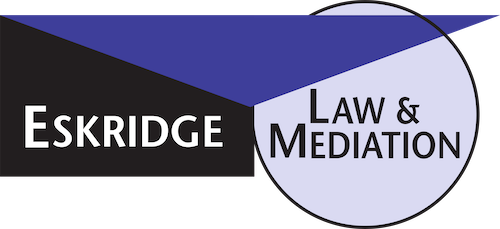December 15, 2020
Many homeowners love having trees – they provide shade, beauty, and sometimes even fruit. However, they also lead to (sometimes intense) disputes with neighbors, especially if one person’s tree is causing damage to another’s land.
In order to determine whose tree is causing the damage, you need to know where the trunk is located. If the tree trunk is wholly on one person’s property, the tree belongs to that property owner, even if branches or roots grow onto a neighbor’s land. [Civ. Code § 833.] If the trunk is on the property line, however, the tree belongs to both property owners. [Civ. Code § 834.] For boundary line trees, neither owner can cut them down without the other’s consent. (This includes parts of the tree that extend onto one property owner’s land, even if the continued existence of the tree or its overhanging branches will damage the property.) [See, e.g., Smith-Chavez, et al., Cal. Civ. Prac. Real Property Litigation (2020) § 11:40; Miller & Starr, California Real Estate (4th ed. 2020) § 17:12; Anderson v. Weiland (1936) 12 Cal.App.2d 730.]
If a neighbor’s tree has branches hanging over your property, your neighbor is liable for any damage caused if those branches fall. [Smith-Chavez, et al., Cal. Civ. Prac. Real Property Litigation (2020) § 11:43; Bonde v. Bishop (1952) 112 Cal App 2d 1.] However, you can only recover the actual damages sustained; the mere fact that a tree is encroaching on your property does not itself provide a right to recover damages. [Miller & Starr, California Real Estate (4th ed. 2020) § 17:11.]
If the branches of a neighbor’s tree are hanging over your property, you can remove those portions that hang over your property, whether or not they cause damage. However, you cannot cut the branches beyond the property line. Remedies for encroaching roots are less clear. Generally, you can cut the roots back to the boundary line, but some courts have held that is allowed only where the roots have caused damage. When removing branches and roots, you must remember you have a duty to act reasonably toward adjoining landowners, and refrain from causing foreseeable injury to a neighbor’s property. [Smith-Chavez, et al., Cal. Civ. Prac. Real Property Litigation (2020) § 11:42; Miller & Starr, California Real Estate (4th ed. 2020) § 17:9; Booska v. Patel (1994) 24 Cal.App.4th 1786 (owner liable for cutting roots of neighbor’s tree which encroached underground and thereby killing tree).] If the encroachment amounts to a nuisance, the aggrieved owner may be able to get an injunction to compel the removal of the branches or roots as well. [12 Witkin, Summary of California Law (11th ed. 2020) “Real Property,” § 389; Miller & Starr, California Real Estate (4th ed. 2020) § 17:9.]
There is a limit to the self-help one can take. Although you can cut off overhanging branches, you cannot enter your neighbor’s property to trim or remove a tree. To do so is a trespass, which is a misdemeanor. [Pen. Code § 602.]
If you willfully and maliciously remove a tree without the legal right to do so, you can be held liable for double or treble damages, including diminution in value, loss of aesthetic value and shade, tree replacement costs, attorneys’ fees, and in some cases, the cost of “tree care” while a replacement tree grows to the size of the original tree. [Civ. Code § 3346; Code Civ. Proc. § 733; Smith-Chavez, et al., Cal. Civ. Prac. Real Property Litigation (2020) § 11:41; Miller & Starr, California Real Estate (4th ed. 2020) §§ 17:9, 17:11.]
Most homeowner’s insurance policies also cover damages caused by fallen trees. You can therefore file a claim with your insurance company, which might try to collect from your neighbor’s insurance policy if the tree was originally located on their property.
Need more information?
ESKRIDGE LAW may be contacted by phone (310/303-3951), by fax (310/303-3952) or by email (geskridge@eskridgelaw.net). Please visit our website at eskridge.hv-dev.com.
This article is based on the law as of the date posted at the top of the article. This article does not constitute the provision of legal advice, and does not by itself create an attorney-client relationship with Eskridge Law.
